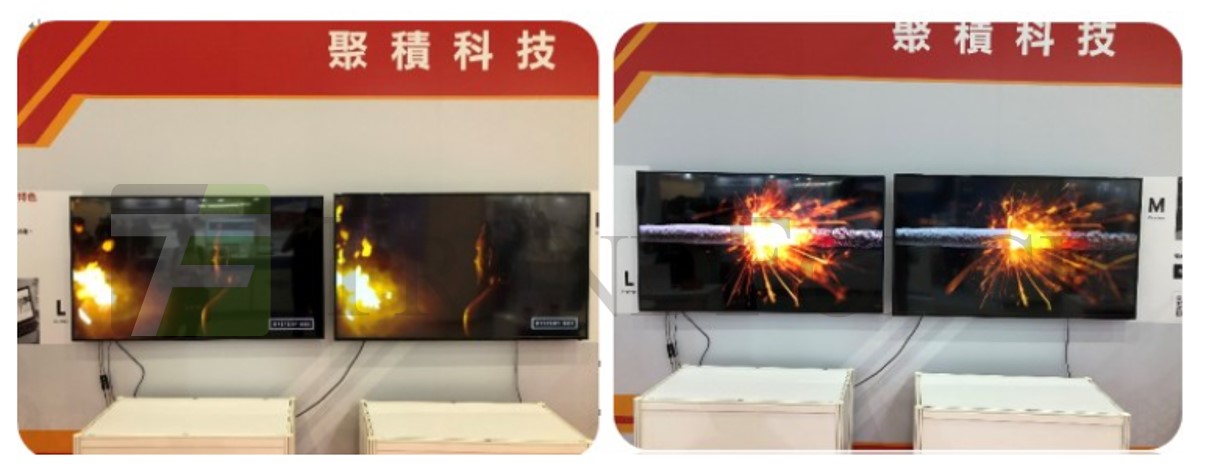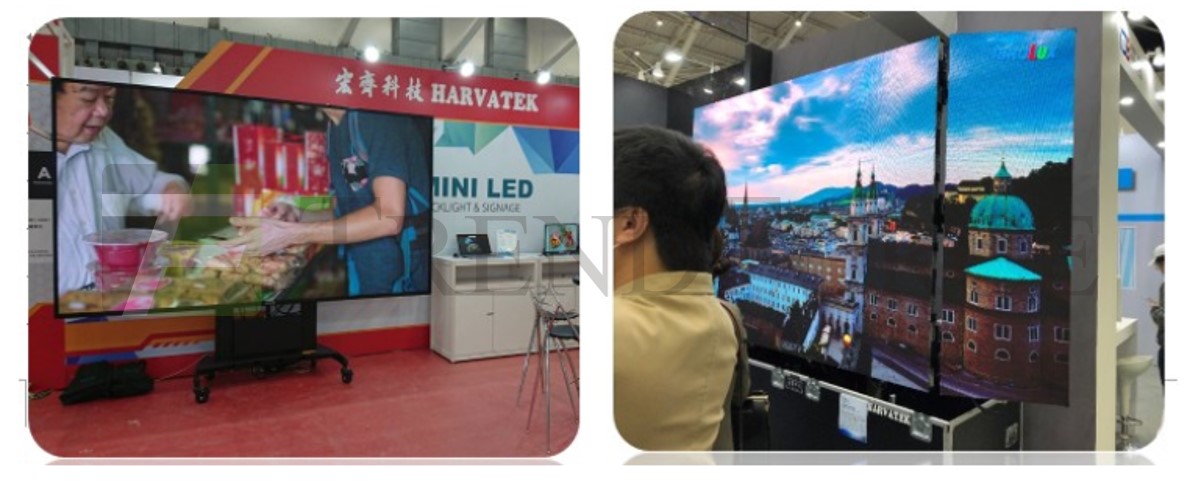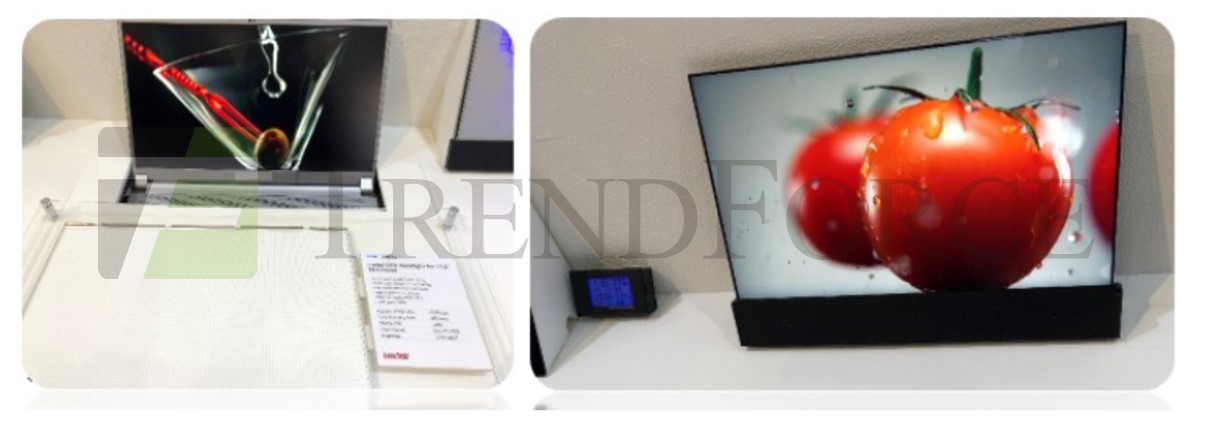Touch Taiwan, an annual trade show exhibiting the most advanced display and touch technologies, finally returns after a two-year hiatus. This year’s edition of Touch Taiwan is scheduled to take place at Taipei Nangang Exhibition Center from April 21 to 23. The exhibitions are divided into five major themes: (1) smart displays, (2) smart manufacturing, (3) advanced equipment, (4) industrial materials, and (5) the incorporation of innovations into supply chains.
Touch Taiwan 2021 has gathered 296 domestic and foreign companies to exhibit their products. Featuring more than 800 display booths, it is expected to be the largest industry trade show in Taiwan for the first half of this year and one of the most prominent international trade shows for 2021. The followings are some of the highlights of the event.
Driver IC specialist Macroblock is now at the exhibition center demonstrating the differences between a TV with a traditional backlight solution and a counterpart that adopts its advanced backlight solution for HDR. Macroblock has partnered with the A2V team to build an HDR TV that uses Mini LEDs to form 1,152 local dimming zones. The A2V team has provided the “Array Vision” Mini
LED boards, while Macroblock has provided the complementing driver ICs.
Macroblock’s driver ICs for LED backlight have three main features.
-
They enable the local dimming design that can achieve HDR effects.
-
The number of driver ICs is reduced so as to simplify the PCB design and board layers. This cuts both costs and the rate of PCB failure, thereby improving the overall yield. And third, there is an “insert black screen” function that reduces the blur phenomenon when dynamic picture is displayed. This function can also be controlled flexibly.
-
The driver ICs that Macroblock currently provides for local dimming backlight include MBI 6353, MBI 6334, MBI 6328, and MBI 6322.
Macroblock possesses a bullish view on the market for backlight solutions used in HDR displays. Therefore, the company is working on complete solution packages and related services to meet the growing demand for more local dimming zones, a higher refresh rate, and a better image quality.
LED package manufacturer Harvatek has introduced a 138-inch portable display for conference halls at Touch Taiwan 2021. The display adopts a 4-in-1 Mini LED package. Multimedia systems that are rented for events at conference halls or similar venues emphasize the ability to quickly assemble and disassemble. Therefore, the 138-inch display that Harvatek is presenting at the trade show is designed to be easily “flipped and folded” for transport. Also, it has a pixel pitch of 1.58mm.
To meet market demand, Harvatek has launched direct-lit and edge-lit Mini LED backlight solutions. The direct-lit backlight board contains 4,000 pieces of Mini LED to form 1,000 dimming zones. As for the edge-lit backlight solution, it uses Mini LED light bars and QD film to achieve NTSC 110%.
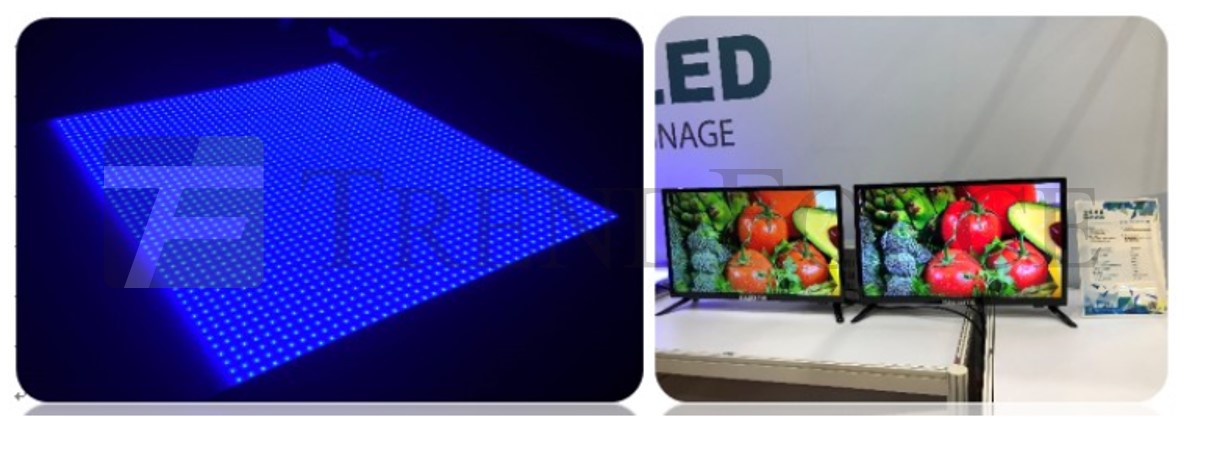
Ennostar, a holding company jointly established by Epistar and Lextar, is demonstrating a 4-in-1 RGB Mini LED package and 0404 LED for display applications. At its booth, there are two MSI gaming laptops. One is a 17.3-inch model, while the other is a 15.6-inch model. The larger model has a display that uses 5,760 Mini LEDs to form 240 dimming zones. The size of these Mini LED chips is 8x12mil. In terms of performance, the 17.3-inch laptop display has a brightness level of 1,200 nits and attains the standard of VESA Certified Display HDR™ 1000. The display of the smaller model uses less than 5,000 LED chips of the same size to form 256 dimming zones. The performance of the 15.6-inch display also matches that of the 17.3-inch display.
Due to the needs of its clients, Ennostar is working to raise the number of local dimming zones to the ideal figure of more than 1,000 (i.e., up to 1,440). An increase in the number of dimming zones will likely lead to an increase in the number of driver ICs as well.
PlayNitride, which focuses on Micro LED, is showcasing an 89-inch curved display that has a pixel pitch of 0.43mm and a resolution of 5K. The company offers its own branded technology called “PixeLED Matrix”. It is a Micro LED display module that comprises an array of 16-in-1 RGB Micro LEDs on a PCB. After passing quality inspection, modules can be spliced together to create a larger display in any sizes. PixeLED Matrix fits into the new trends in product development as it is a low-cost and high-yield solution.
Additionally, PlayNitride wants to capitalize on the future growth of AR-related applications. Another item that the company is presenting at Touch Taiwan 2021 is a 0.39-inch Micro LED display that supports full color and has a sub-pixel pitch of just 9µm. The pixel density of this tiny Micro LED display reaches a record high of 1,411ppi. PlayNitride has stated that the manufacturing of this product involves the mass transfer of Micro LED chips that are sized 5x5µm. Going forward, small-sized Micro LED displays are expected to play a key role in the development of AR glasses.
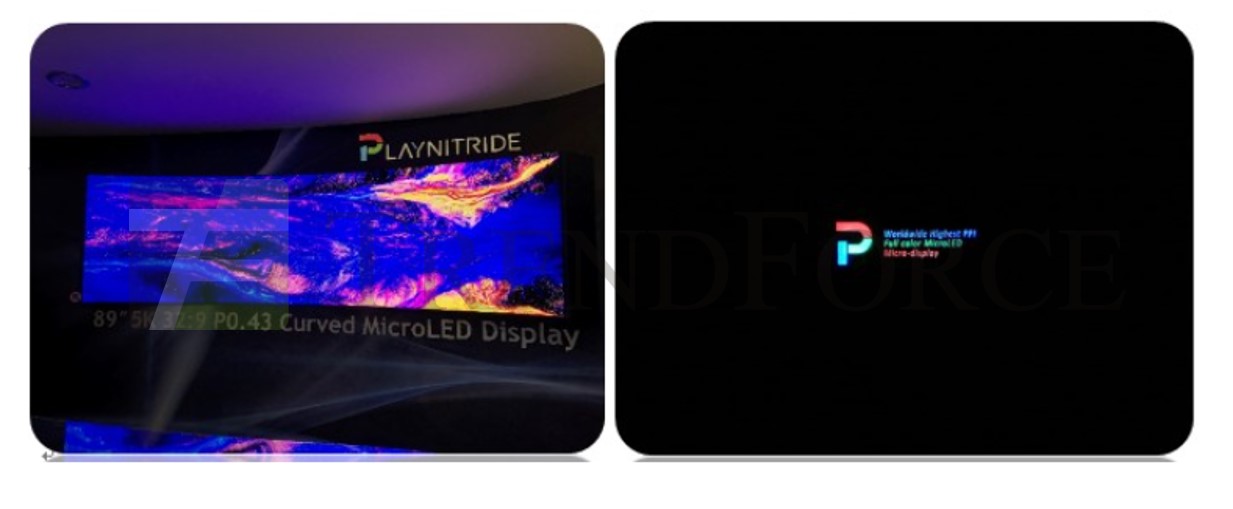
For this year’s Touch Taiwan, display manufacturer Innolux has brought a 92.4-inch Micro LED display featuring QDs and AM driving. Innolux’s Micro LED display integration technology has several distinct features. First, it is a self-emissive Micro LED display. Second, it uses QDs for color conversion and achieves full color. Third, it has an efficient process for mass transfer and repair. And fourth, it allows several pieces of high-resolution glass to splice together to form a display system. It is also worth noting that Innolux has developed its own technologies for mass transfer and repair.
Regarding the specifications of the 92.4-inch Micro LED display, it has a pixel pitch of 0.6mm and is 4K in resolution. Innolux has designed the pixel in a way that the ‘Ultra High Black Ratio” reaches 98%. The ambient contrast ratio of this Micro LED display comes to 14,000:1, which surpasses the values offered by LCDs, OLED displays, and most other kinds of LED displays. With these specifications, Innolux’s Micro LED display can show sharp and detailed images. Furthermore, it can enable some 3D effects.
In 2015, Innolux made the strategic decision to develop Micro LED displays that are based on the color conversion of the blue light from blue Micro LEDs using QDs. The company has taken this direction because blue Micro LED has the highest light-emitting efficiency (or quantum efficiency) compared with Micro LEDs in other colors, while color conversion with QDs offers even better color performance. The future applications of Innolux’s Micro LED display integration technology include large-sized 8K indoor displays and TVs.
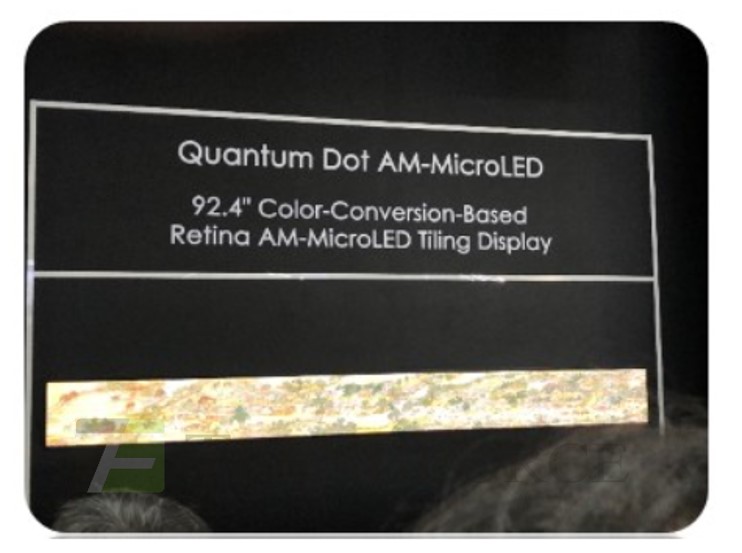
According to the latest observations from the LEDinside team under TrendForce, the markets for video walls and HDR displays felt the impacts of the COVID-19 pandemic during 2020, but they are now poised for a rebound and have significant potential opportunities for further development. The exhibitions at Touch Taiwan 2021 have revealed notable advances in Micro and Mini LED displays with respect to chip manufacturing, fabrication equipment, and the exploration of possible applications. Companies that are involved in this supply chain are not only investing in technologies that are more future-oriented but also actively addressing concerns related to mass production and the applicability of their solutions.
Looking ahead, the pandemic is expected to gradually subside over time, and overseas orders for various types of displays are projected to grow in volume. However, there is the possibility that LED and display manufacturers will have to extend the lead time for their incoming orders and raise prices on their products due to a supply crunch for driver ICs or production-related materials.
Author: Joanne Wu, Research Manager at TrendForce







